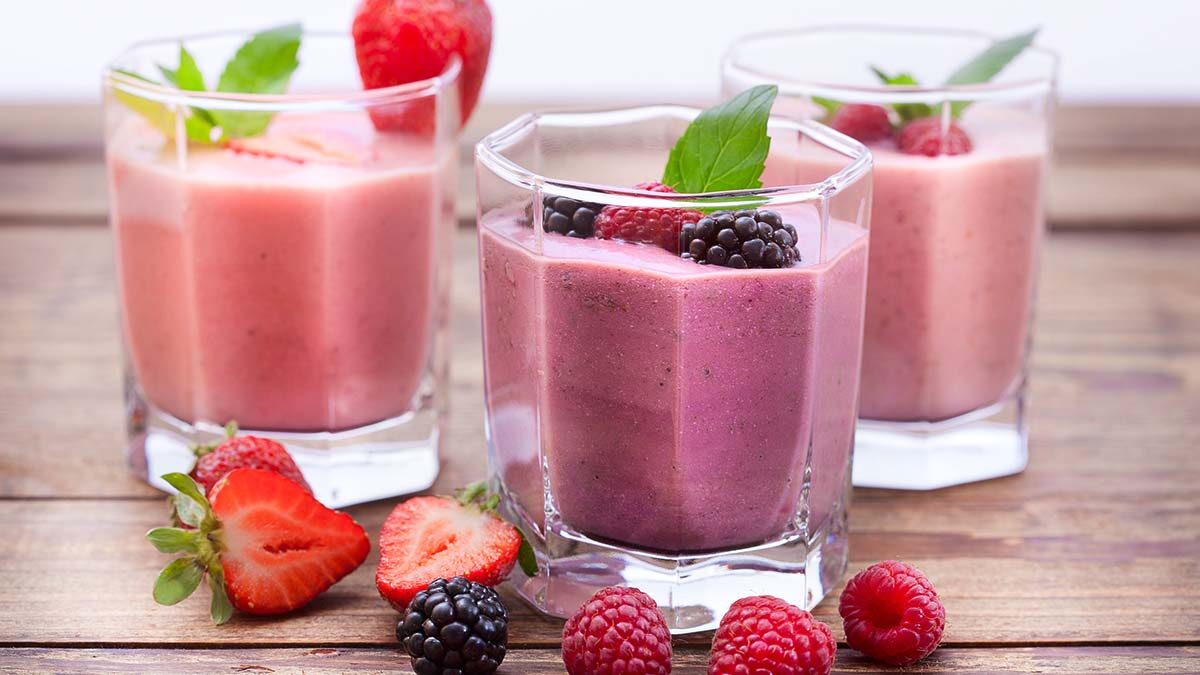Studies such as a recent Harvard School of Public Health investigation found that the consumption of whole fruits is associated with a significantly lower risk of type 2 diabetes, whereas fruit juice consumption is associated with a higher risk, highlighting the dramatic difference between eating whole fruits and drinking fruit juice. Cholesterol serves as another example. If we eat apples, our cholesterol drops. On the other hand, if we drink apple juice, our cholesterol may actually go up a little. Leaving just a little of the fiber behind—as in cloudy apple juice—was found to add back in some of the benefit.
We used to think of fiber as just a bulking agent that helps with bowel regularity. We now know fiber is digestible by our gut bacteria, which make short chain fatty acids (SCFAs) out of it. SCFAs have a number of health promoting effects, such as inhibiting the growth of bad bacteria and increasing mineral absorption. For example, experimentally infused into the rectum of the human body, SCFAs can stimulate calcium absorption, so much so that we can improve the bone mineral density of teenagers just by giving them the fiber naturally found in foods like onions, asparagus, and bananas.
Our good bacteria also use fiber to maintain normal bowel structure and function, preventing or alleviating diarrhea, stimulating colonic blood flow up to five-fold, and increasing fluid and electrolyte uptake. The major fuel for the cells that line our colon is butyrate, which our good bacteria make from fiber. We feed them, and they feed us right back.
If the only difference between fruit and fruit juice is fiber, why can’t the juice industry just add some fiber back to the juice? The reason is because we remove a lot more than fiber when we juice fruits and vegetables. We also lose all the nutrients that are bound to the fiber.
In the 1980’s, a study (highlighted in my video, Juicing Removes More Than Just Fiber) found a discrepancy in the amount of fiber in carob using two different methods. A gap of 21.5 percent was identified not as fiber but as nonextractable polyphenols, a class of phytonutrients thought to have an array of health-promoting effects. Some of the effects associated with the intake of dietary fiber in plants may actually be due to the presence of these polyphenols.
Nonextractable polyphenols, usually ignored, are the major part of dietary polyphenols. Most polyphenol phytonutrients in plants are stuck to the fiber. These so-called missing polyphenols make it down to our colon, are liberated by our friendly flora and can then get absorbed into our system. The phytonutrients in fruit and vegetable juice may just be the tip of the iceberg.
For those that like drinking their fruits and vegetables, these findings suggest that smoothies may be preferable. I can imagine people who eat really healthy thinking they get so much fiber from their regular diet that they need not concern themselves with the loss from juicing. But we may be losing more than we think.
Why are polyphenol phytonutrients important? See, for example, my video How to Slow Brain Aging by Two Years
Not that fiber isn’t important in its own right. Check out:
- Dr. Burkitt’s F-Word Diet
- How Fiber Lowers Cholesterol
- Fiber vs. Breast Cancer
- Breast Cancer and Constipation
For more on smoothies, check out:
- Are Green Smoothies Good for You?
- Are Green Smoothies Bad for You?
- Green Smoothies: What Does the Science Say?
- Liquid Calories: Do Smoothies Lead to Weight Gain?
- The Downside of Green Smoothies
In health,
Michael Greger, M.D.
PS: If you haven’t yet, you can subscribe to my free videos here and watch my live year-in-review presentations Uprooting the Leading Causes of Death, More Than an Apple a Day, From Table to Able, and Food as Medicine.
